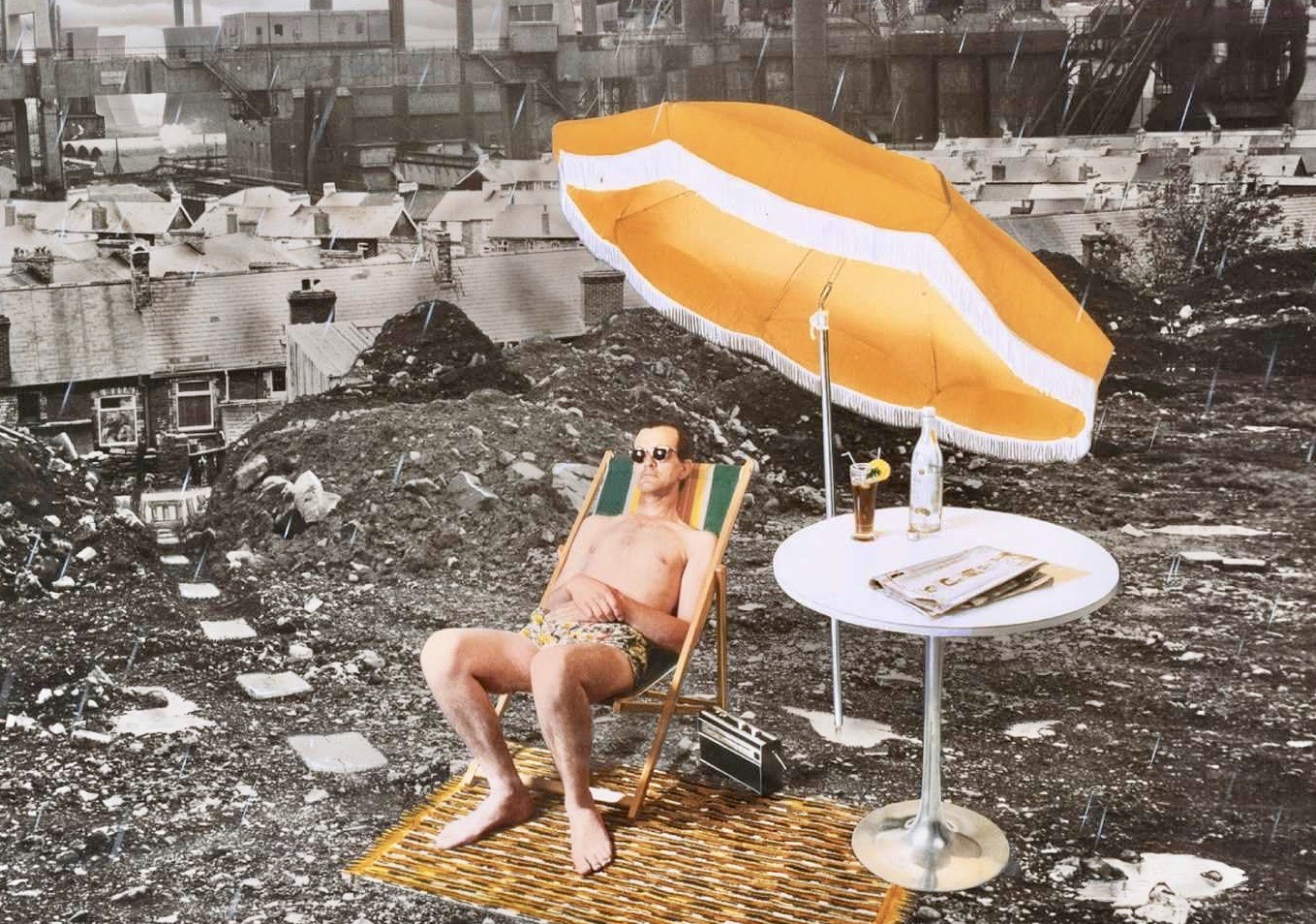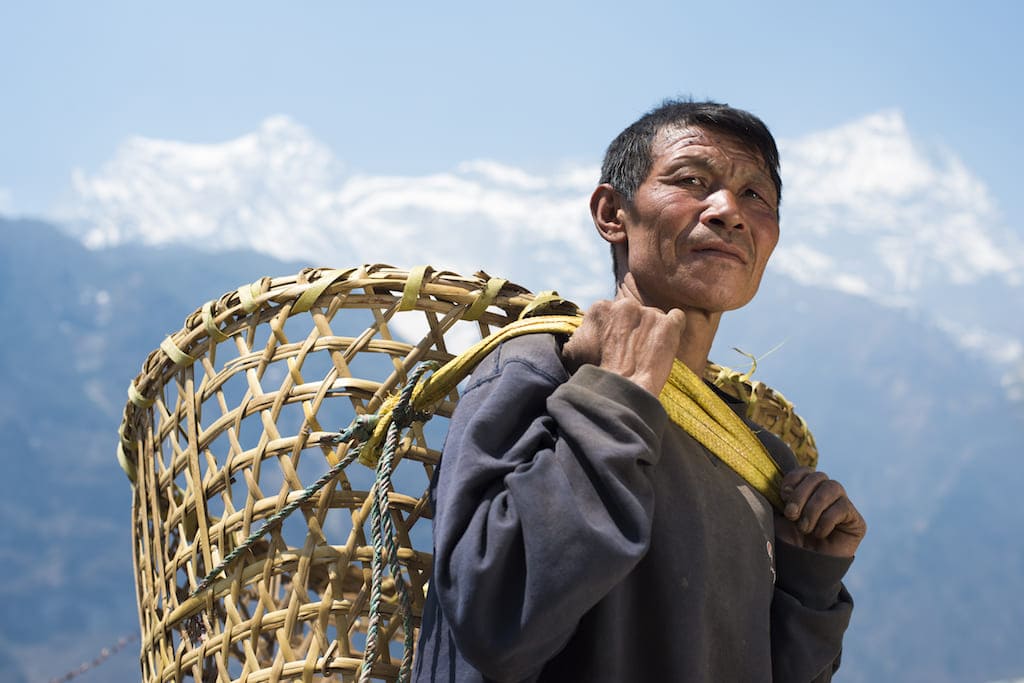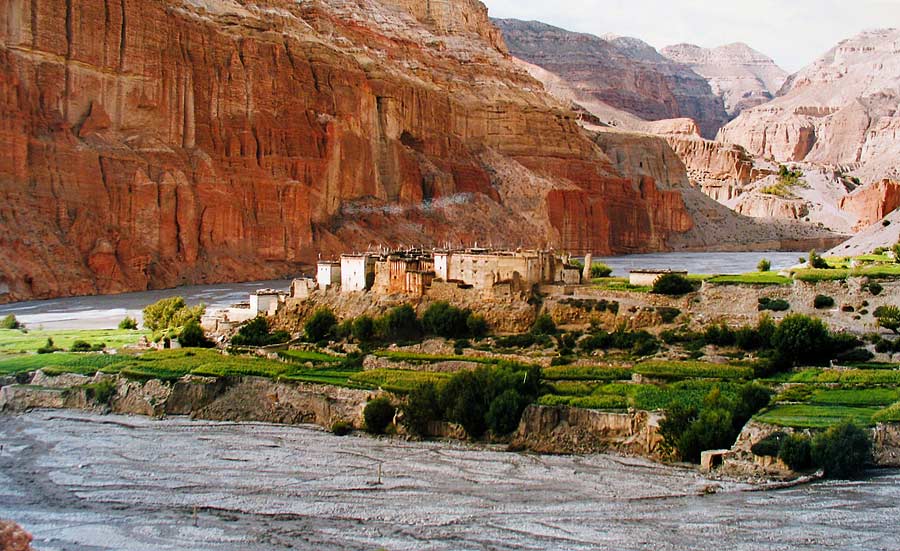You can contact us by e-mail or phone
from uk
01405 862917
outside uk
+44 1405 862917
01405 862917
+44 1405 862917
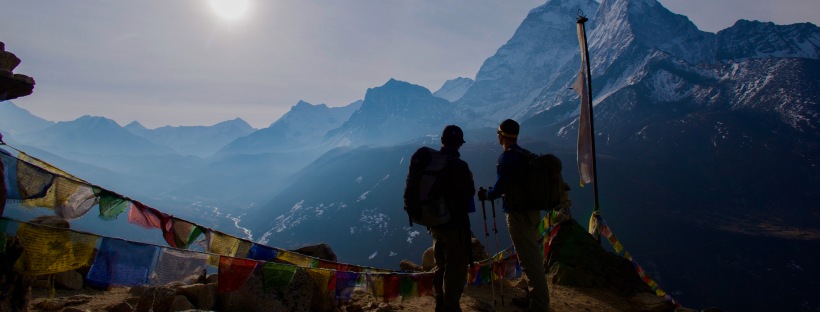
Five of the Best - Nepal Short Treks
Snow Cat Travel - A UK registered trade mark
We’ve selected five of the very best Nepal Short Treks. All these Nepal treks can be done within a two week vacation or even less, so you can also include some cultural sightseeing. A short trek in Nepal doesn’t necessarily mean an easy trek though. But, as most people are confined to a two week holiday some of the lengthier classic Nepal treks take more time. But, a short Himalayan trek doesn’t mean you have to compromise on superlative Himalayan views or the experience of trekking in Nepal.
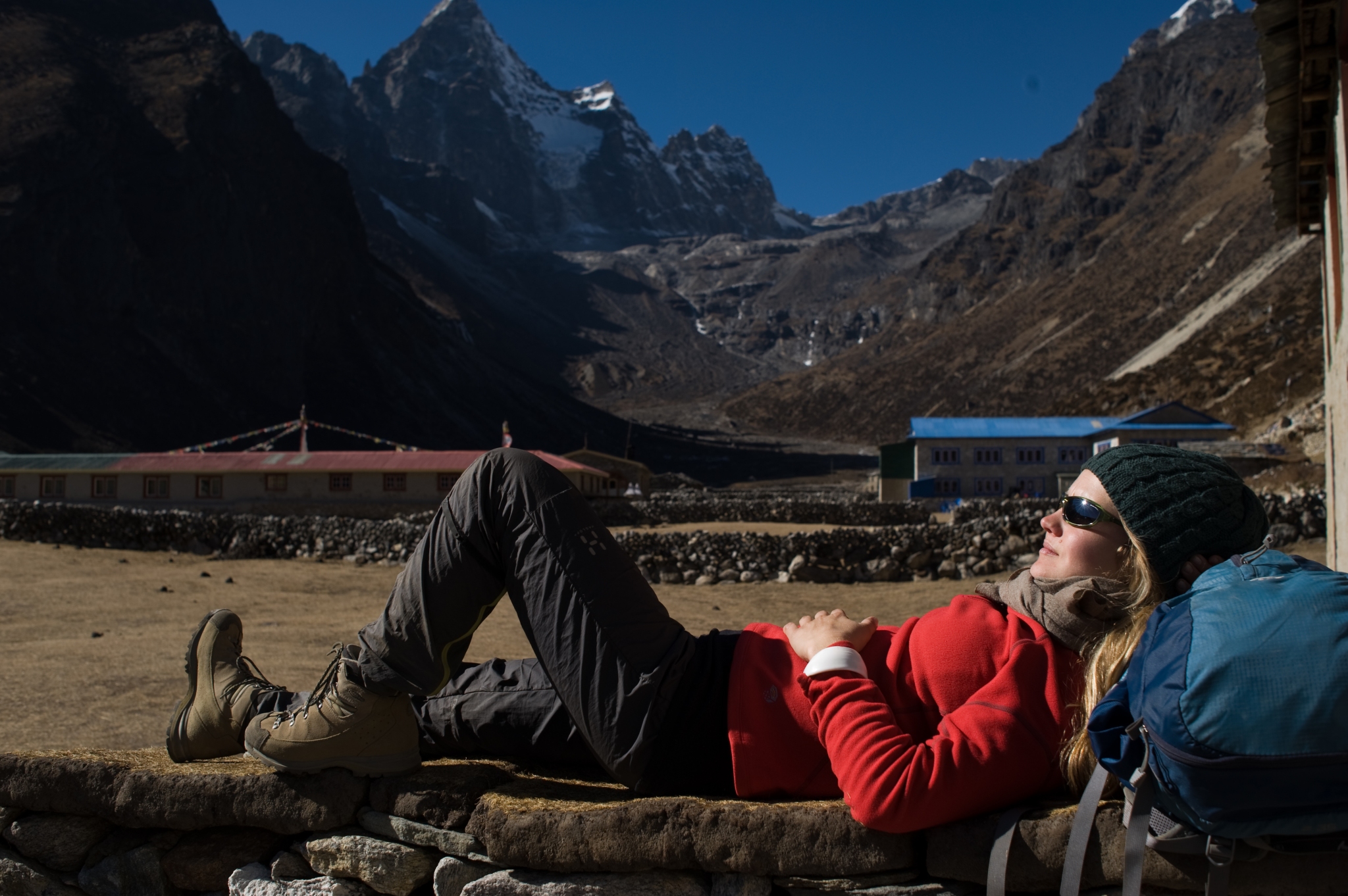
As with all lists, our top five short Nepal treks is a matter of opinion. The basic criteria we’ve used is that the entire trip duration (including international travel time) has to be two weeks or less. So, we’re not just considering the actual length of the trek itself. Rather we’re taking into consideration getting from Kathmandu to the start of the trek, back to Kathmandu and then home.
All the treks are NO CAMPING too, with trekking lodges (sometimes basic) available throughout.
If you have particular favourite short trek in Nepal then we’d love to know your opinion too. So, for example, the EVEREST BASE CAMP TREK is around 13 days of walking, but with travelling time that usually requires around 17-18 days in total and that’s more than a two week vacation.
7 walking days, maximum altitude 3860m
There’s absolutely no reason why it has to be “Everest Base Camp or nothing” as far as trekking in the Everest region goes. Indeed there’s much more to the “land of the Sherpa people” than just Everest alone. But, of course as Everest is the highest mountain in the world, if you’re trekking in the Everest region then of course you’ll want to see it.
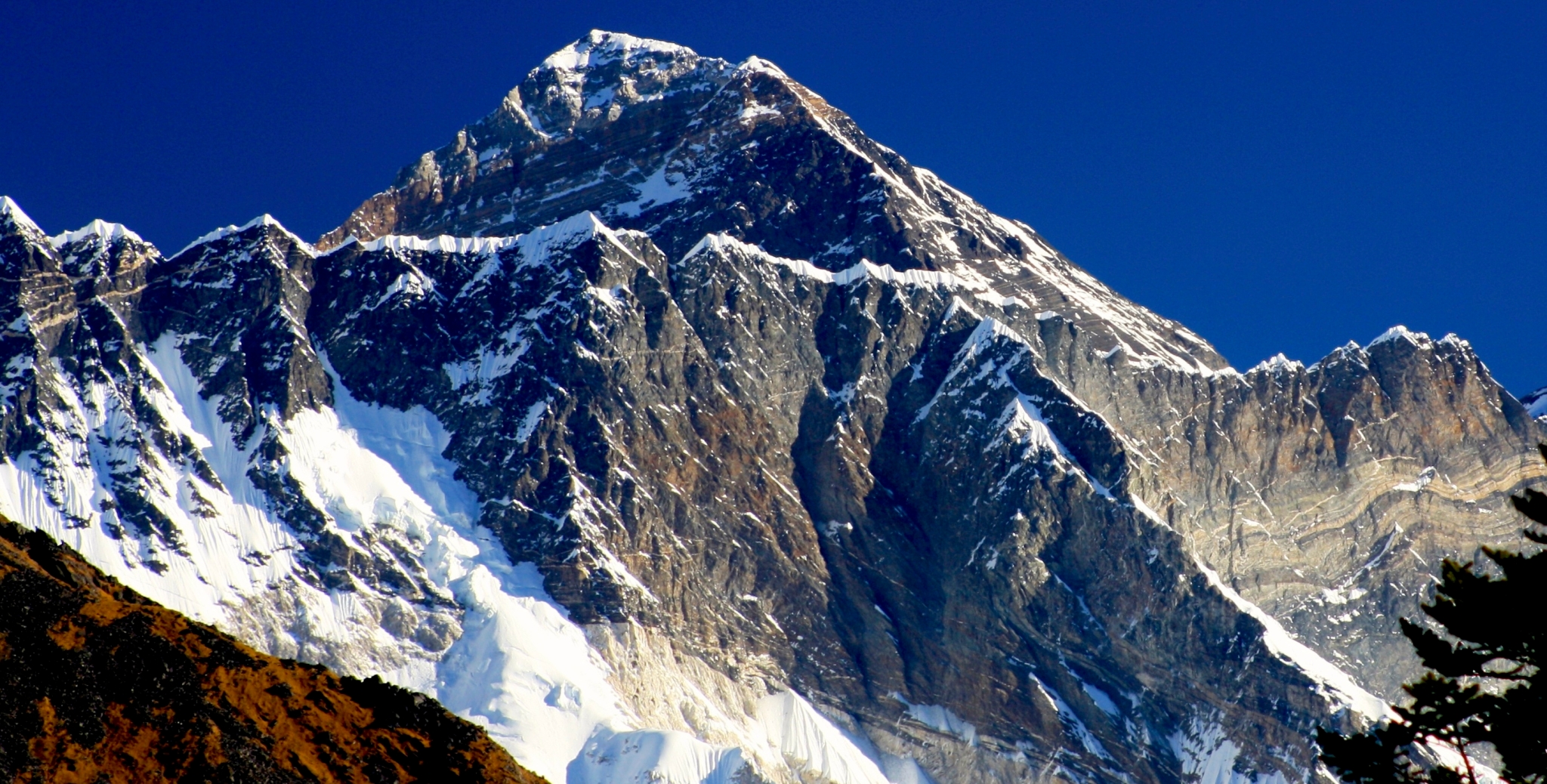
And on this short Everest trek you’ll certainly see the highest mountain in the world and more. There are panoramic views of the summit of Everest rising above the dramatic Nuptse ridge line, Lhotse, Ama Dablam, Thamserku, Kantaiga and more to behold. Actually, from Everest Base Camp itself you can’t see the summit of Everest.
Of course on this short Everest trek you’ll see big mountains, but also you’ll be walking through many friendly Sherpa villages and visit Tibetan Buddhist monasteries too.
From Kathmandu you’d take the brief, but dramatic flight up to Lukla, the gateway to the Everest region and immediately follow the Everest Base Camp trail, initially descending from Lukla to Phakding.
The following day starts with a lovely walk up a river valley before a stiff and lengthy climb up to the sherpa capital of Namche Bazaar. But, as you ascend you’ll get your first tantalising glimpse of the summit of Everest!
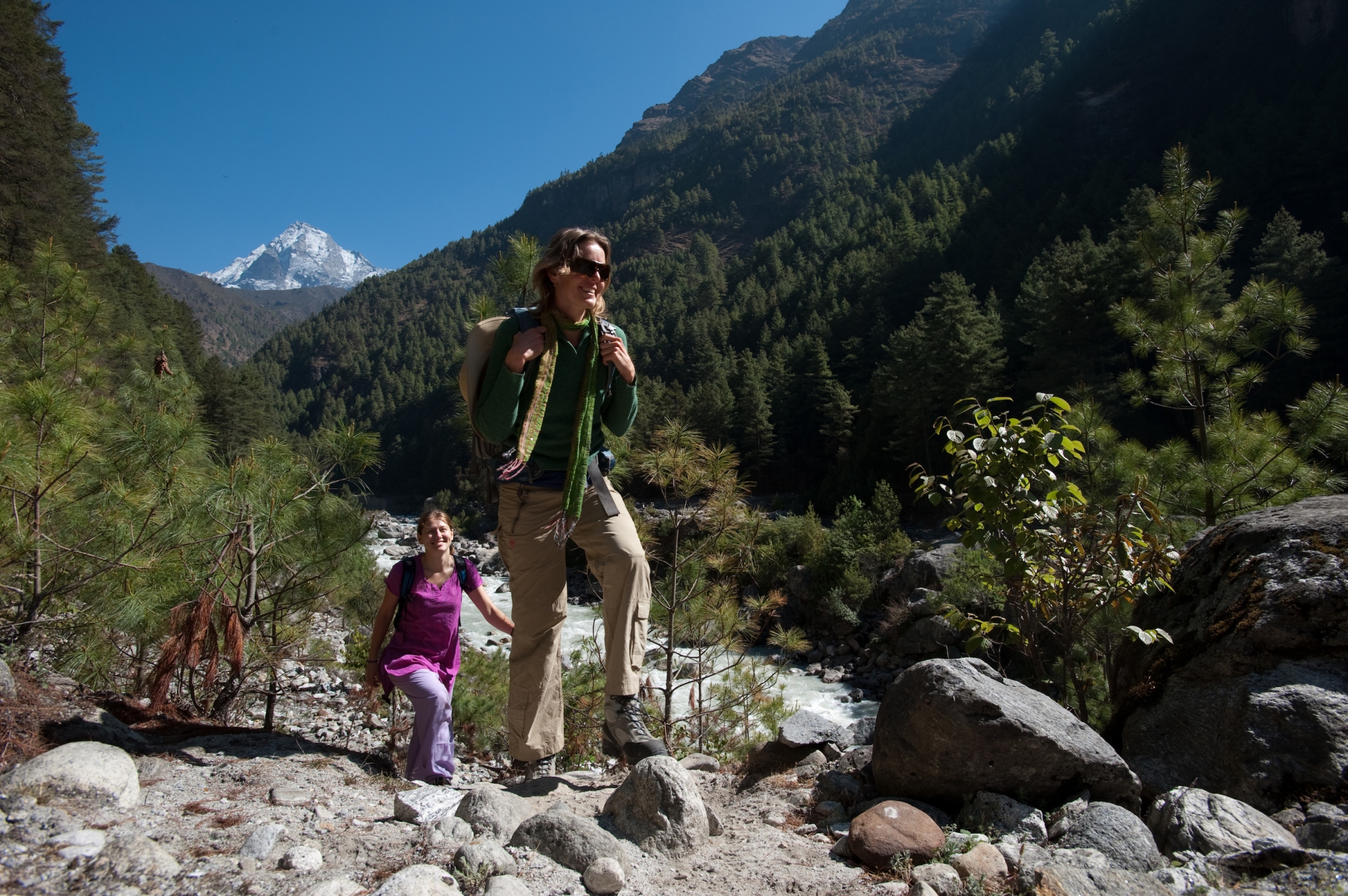
Mindful of the altitude (Namche is at almost 3500m), you really must have an acclimatisation day in Namche before proceeding any higher. Namche itself is set in a natural bowl, but you can walk up to a great Everest view point from Namche and even visit the Museum of Sherpa Culture to help your body get used to the altitude and without over cooking things.
The following day you’d trek to the village of Kangjuma and take a detour from the main Everest Base Camp route by heading into the Nangpo Tsangpo Valley and Thame. From here, it’s a continuous climb up to Syangboche and then over a low col to the village of Khunde, where the Hillary Hospital and Hillary School are. Passing through Khumjung, you then finish the day with a short descent to Kanjuma (3600m).
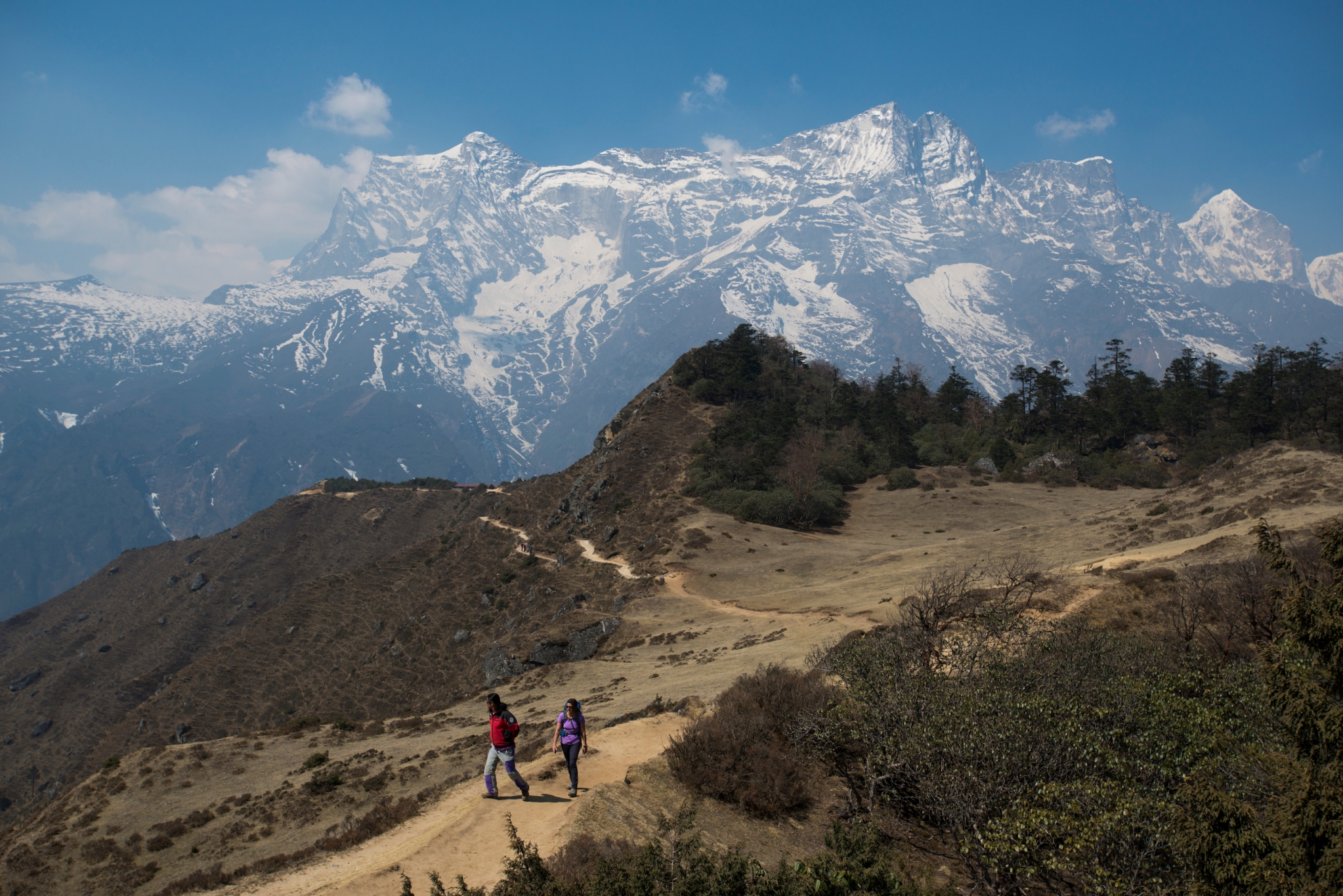
For much of the walk from Kanjuma to Thyangboche (Tengboche), there are breathtaking views of Ama Dablam, Lhotse, and Everest’s summit. Across the valley and upwards, you’ll also see where you’re heading, the village of Thyangboche, which astrides a forested ridge. It’s downhill to start and to cross the Imja Khola via a footbridge. The trail then climbs steadily up to Thyangboche, which lies at an altitude of 3860m. From here, as well as the impressive peak of Kantaiga looming above, there are classic views of the Everest/Lhotse Massif. The village is home to the famous Thyangboche Monastery, where many an Everest climbing expedition has visited to gain blessings for their summit attempts.
A return hike from Thyangboche up to Pangboche and back affords wonderful close up views of Ama Dablam before making the return hike to Lukla over two days via Monjo.
For more information see: Everest Highlights Treks
7 walking days, maximum altitude 3700m
This short Dolpo trek ventures as far as the dramatically located Phoksundo Lake and takes advantage of the handful of very simple and basic trekking lodges that have appeared along the trail.
The very mention of the name Dolpo usually fires the imagination of any Himalayan connoisseur. This is a remote and isolated region of Nepal where the pre-Buddhist Bon Po faith still exists. Trekking in Dolpo has always been considered very special. The need for a special permit as well as complex travel logistics ensure that this wonderful hike up to Phoksundo Lake remains lesser trekked.
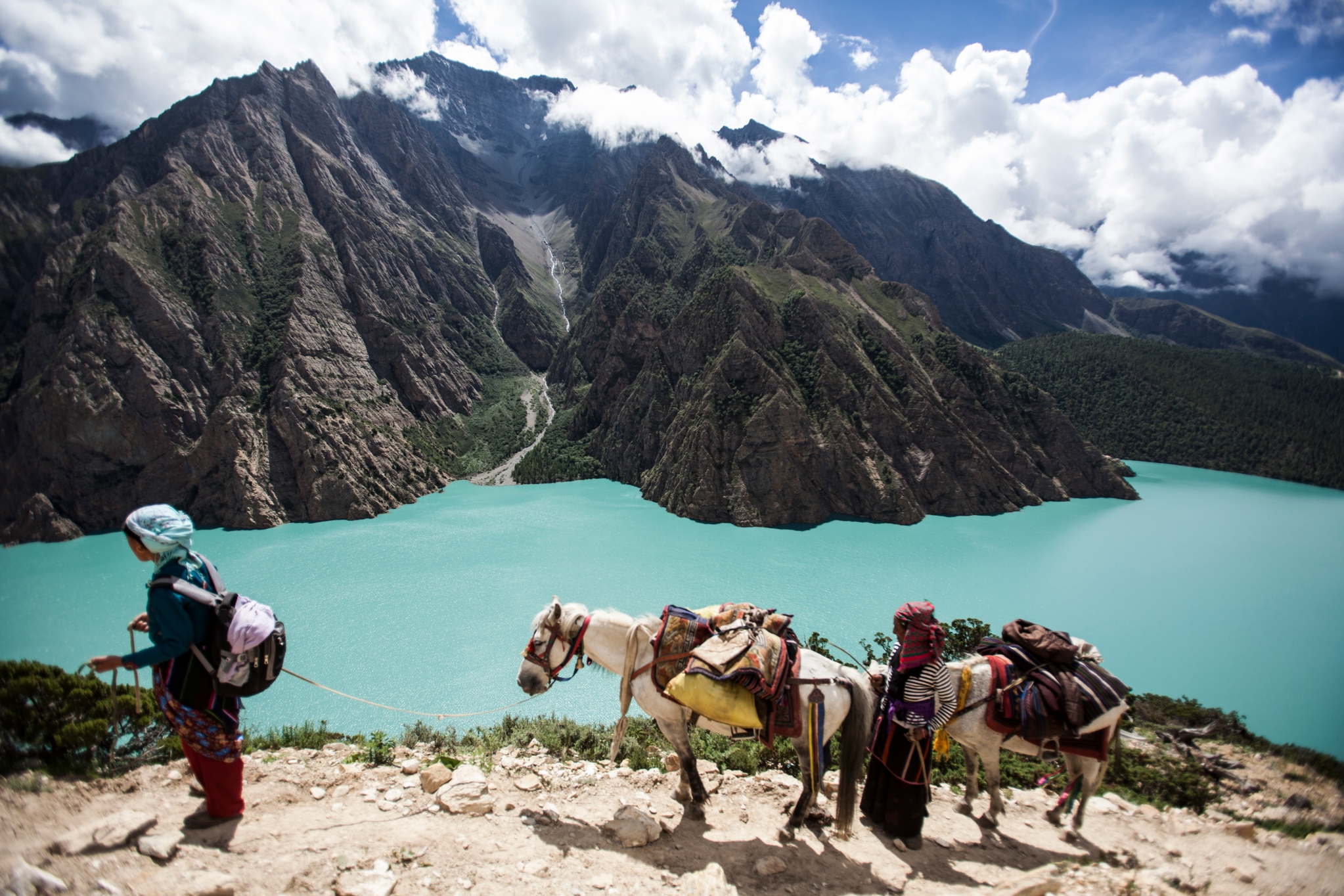
This linear route to the most spectacular and deepest lake in Nepal still requires two separate domestic flights in both directions to reach the trek’s start and end point of Juphal. Thus, even though the trek to Phoksundo Lake is moderate, there is a real sensation that you’re in a special, remoter part of the Himalayas. Although the advent of teahouses has increased popularity, it is still very much considered a lesser-travelled route. The trek profile is rather simple. Primarily, you are trekking the course of the river that flows from Phoksundo Lake upstream or downstream.
From Kathmandu you’d first fly to the town of Nepalgunj, close to the border with India. Early the following morning you’d fly into the Himalaya and the airstrip at Juphal and then walk down to the Behri river as far as Dunai.
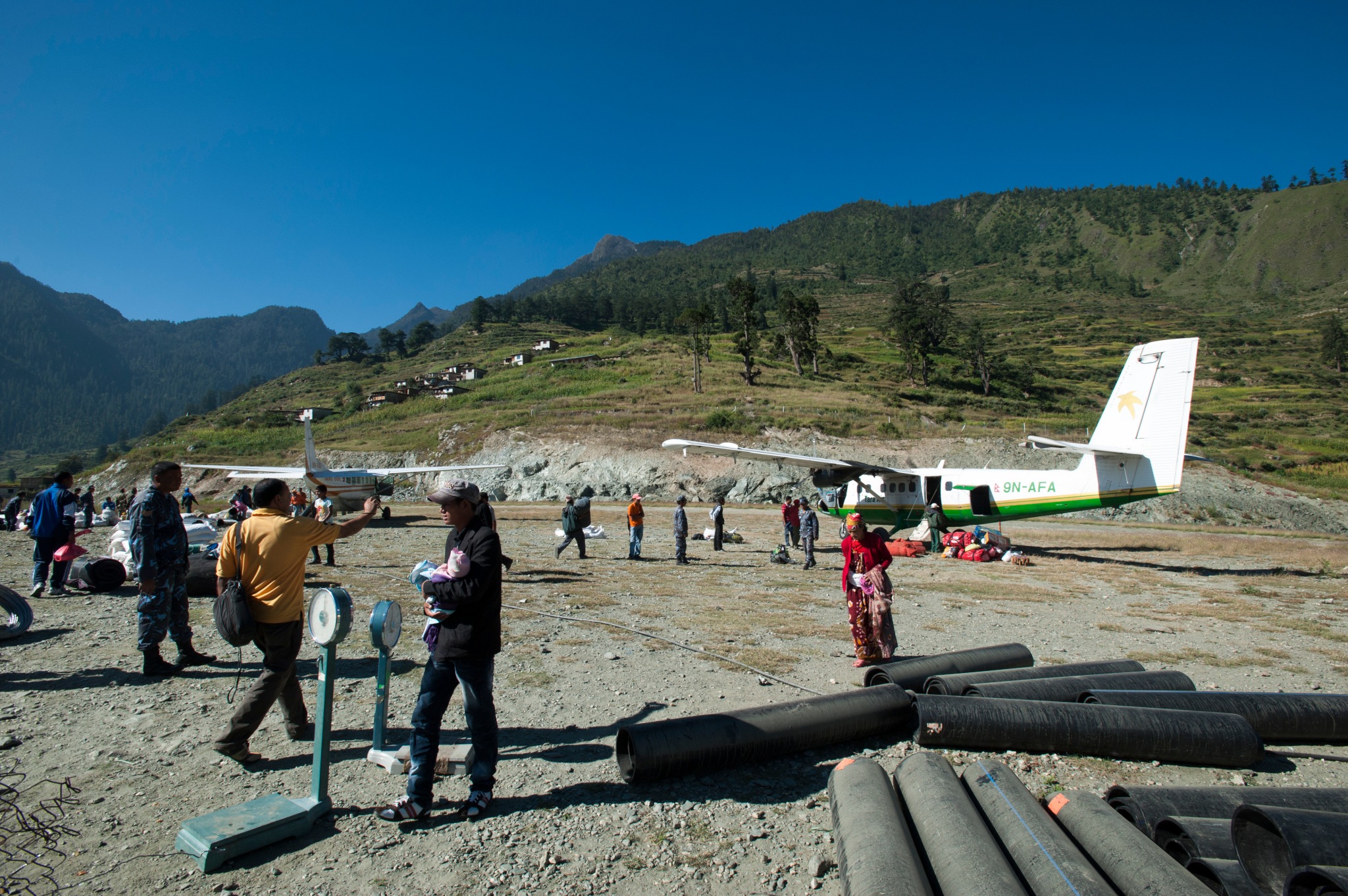
The following day you enter the Shey Phoksundo National Park and primarily follow the course of the Phoksundo river that flows down from Phoksundo Lake itself overnighting at lodges in Chhepka and Jharana before reaching Ringmo at 3640m.
Obviously, this is what you made the effort to come here and see, so a day really should be spent marvelling at the amazing sight of Phoksundo Lake, surrounded by steep-sided mountains that run right down to the impossibly turquoise waters of Nepal’s deepest and most impressive lake. With Kanjirowa Himal (6612m) as the backdrop in this wondrous high alpine, tranquil setting spend the day exploring on foot.
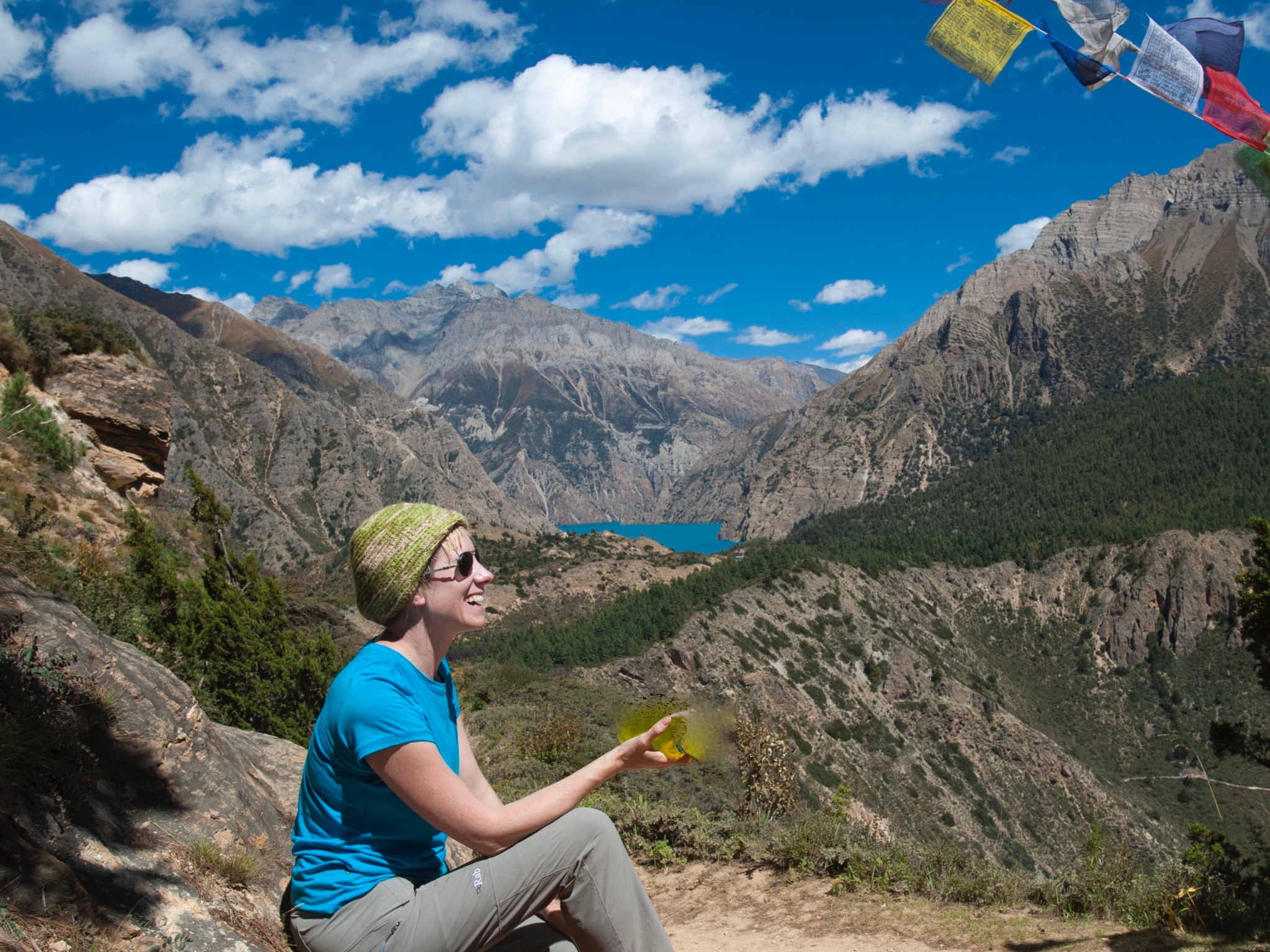
While a circuit of the lake is not feasible (you’ll see why), you might want to follow a trail that would take those heading deeper into Dolpo and across high passes to Shey Gompa and climb up above the lake for views from a higher vantage point. The trail itself is a little precarious in places and isn’t known as “The Demon’s Trail” for nothing. Time spent exploring Ringmo itself is seldom wasted. As well as a couple of Tibetan Buddhist monasteries, there are also ancient Bon Po sites. The Bon Po faith is actually much older than Tibetan Buddhism, and here in Dolpo is one of the last places where it can still be found.
The way back is the way you came, except it’s mostly descent and two days of trekking is all that’s needed to reach Juphal. From Juphal the early morning flight to Nepalgunj usually arrives in time to take the flight back to Kathmandu.
For more see: Phoksundo Lake Trek
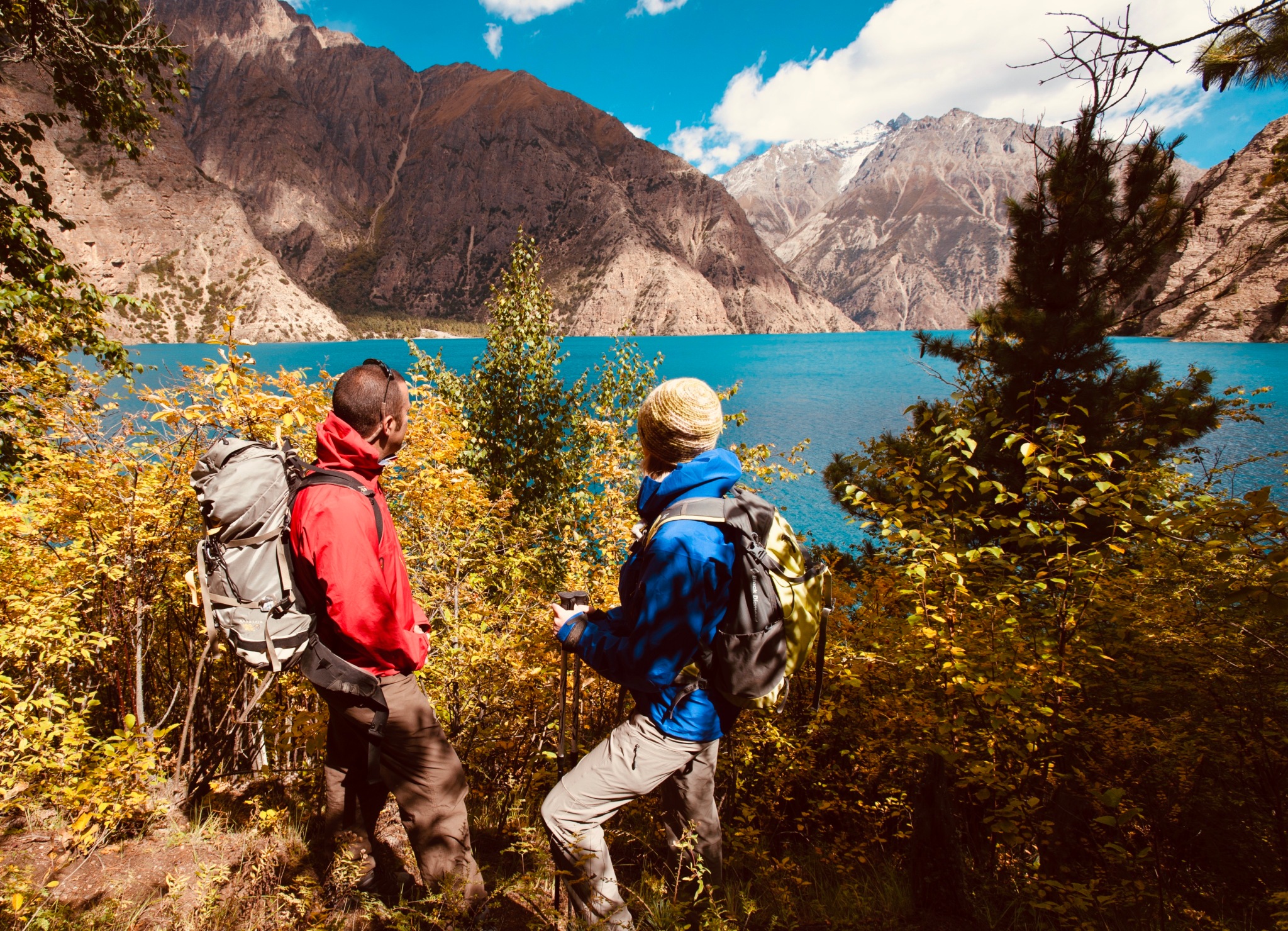
7 walking days, maximum altitude 4500m
This short Annapurna region “horseshoe” trek used to be all camping. But, not anymore as there’s now a handful of small trekking lodges in this “off the beaten track” area. It really should be called The Fishtail Trek too, as it is the twin summited “Matterhorn of the Himalayas” that dominates this trek. But, the base camp for Fishtail (Macchhapuchare) is actually on the trek up to Annapurna Base Camp, although as climbing Fishtail is forbidden (it’s considered a sacred peak) it’s not really a base camp either.
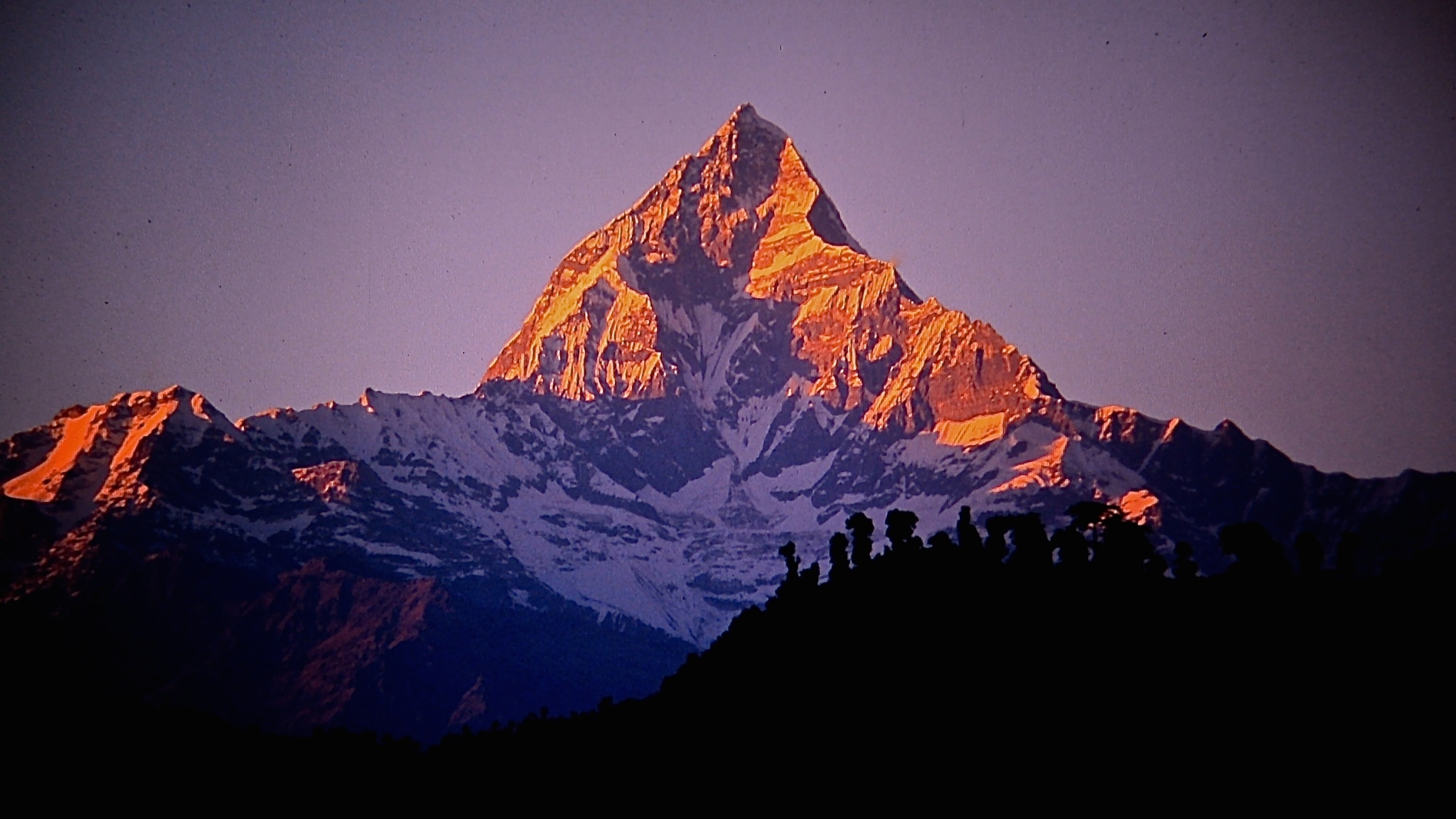
This short trek affords some of the most incredible views to be found anywhere in the Nepal Himalayas for a trek of such short duration. From the principle objective of Mardi Himal Base Camp, the towering, almost vertical, iconic Fishtail Peak looms right over you, seemingly “close enough to touch”. Even nearer is the impressive Mardi Himal Peak, and there’s more, with Annapurna 1 to the west and Annapurna 4 to the east to behold in all their magnificence. Add to this the pleasure of beginning the trek at low elevation, passing up through forests and small villages before emerging into a more open, sub-alpine landscape where there’s no discernible permanent habitation, and to enjoy some fine open ridge walking with mountain views to accompany you as you go.
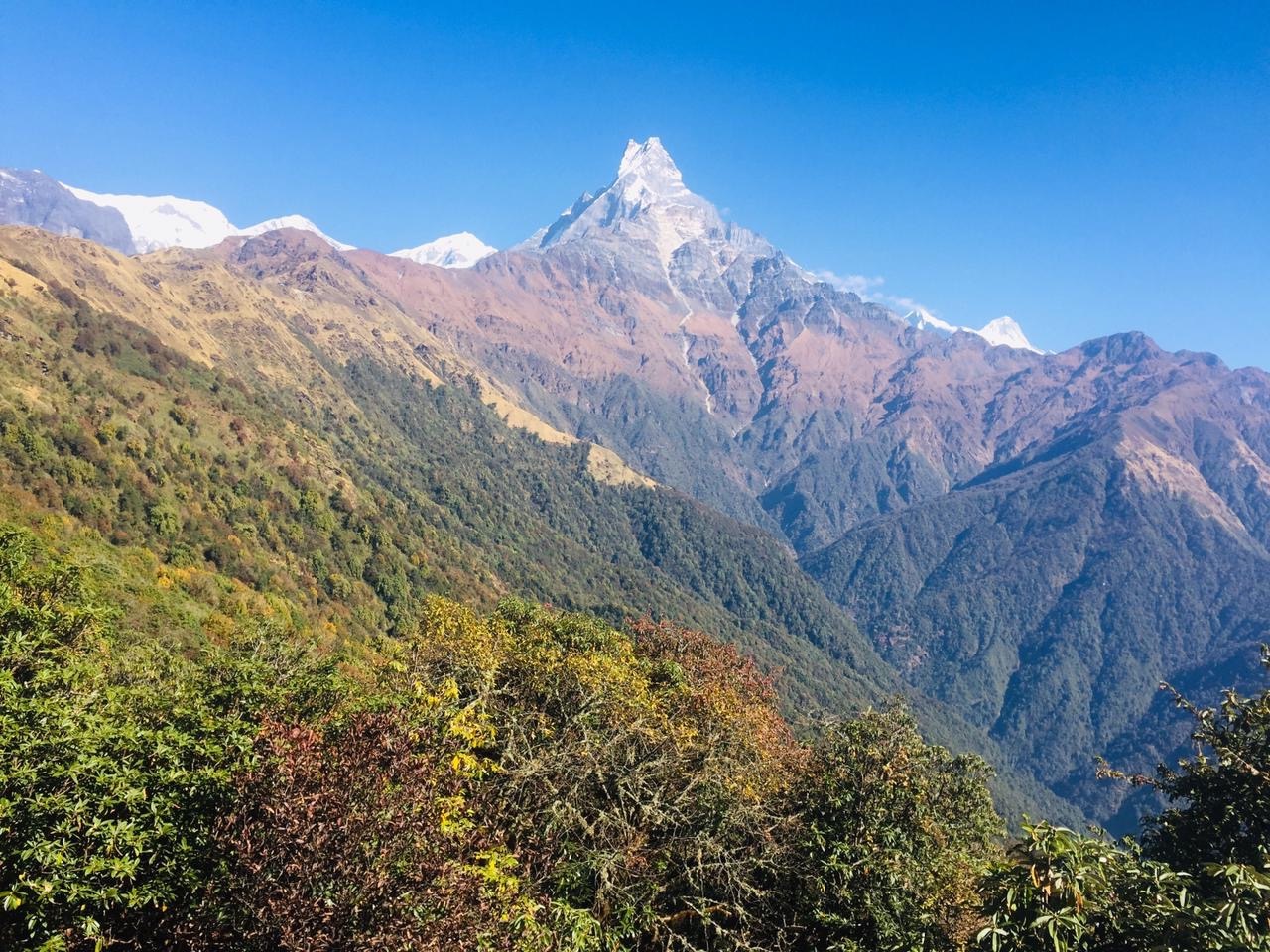
After flying into Pokhara from Kathmandu you start on one of the main Annapurna trails in the lower Modi Khola Valley before veering away at Pitam Deurali and climbing up the Gorujure Danda ridgeline all the way to what is now known as “Kokar Forest Camp”. Up here there are aren’t really any permanent habitations of any notable size and over the next two days you trek further up the ridge to High Camp via an overnight at Low Camp. The trail to Annapurna Base Camp is now below you and across the valley is the rather busy Poon Hill.
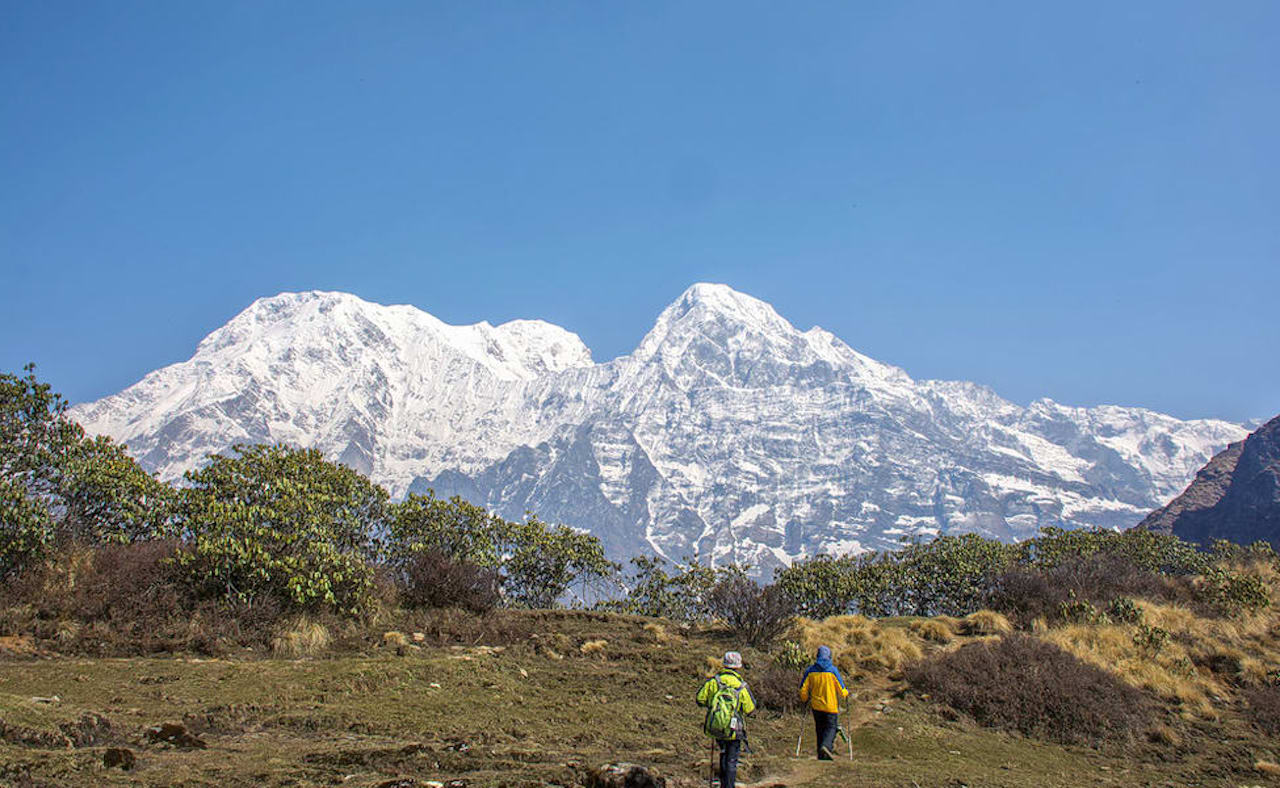
The trek to Mardi Himal Base Camp and back to High Camp is linear. You leave High Camp and head directly towards Mardi Himal Base Camp as you climb up the Kali Danda Ridge that leads from Mardi Himal Peak itself. As you progress, ever gaining height, the towering peaks slowly but surely become closer and closer. After around 4 hours of huffing and puffing on this stiff hike up to Mardi Himal Base Camp at 4500m, here you are! Immediately above you is Mardi Himal (5553 m), and above that is 6997m Fishtail Peak. If the altitude and exertion don’t take your breath away, the close-up views of these steep mountain peaks will.
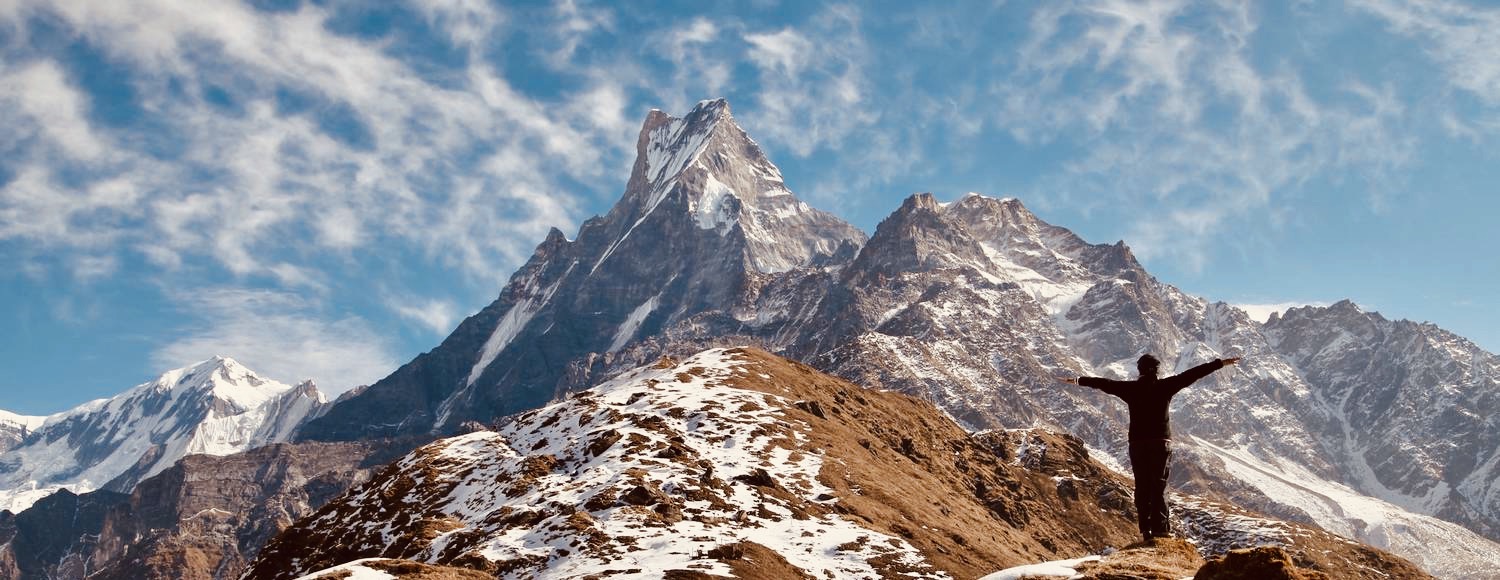
Far below you is the Upper Modi Khola Valley and the route to Annapurna Base Camp, and from this high vantage point, Annapurna, Annapurna South, and Hiunchuli look more impressive than ever. Depending on progress and other conditions, it may be possible to go even closer and traverse close to a mountain glacier. The return to High Camp is the same way you came up, and heading downhill is usually faster.
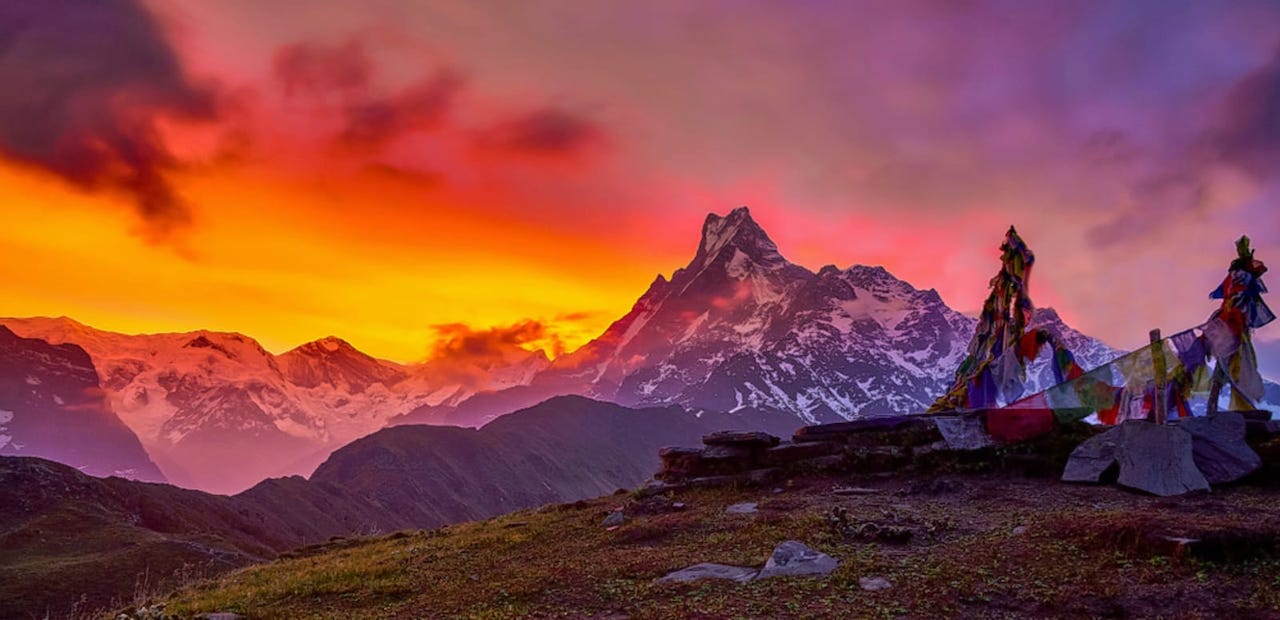
From High Camp you walk back down to Low Camp, but exit by descending into a different and lesser trekked valley via Sidhing before reaching the village of Lumre the following day and from where a jeep would take you back to Pokhara. It’s then a mere 25 minutes flying time back to Kathmandu the following morning.
For more see: Mardi Himal Base Camp Trek
8 walking days, maximum altitude 4600m
With a reputed 80% of all trekkers heading to either the Annapurna or Everest region, this trek seems to be a bit of a hidden gem and it actually starts right on the outskirts of Kathmandu too!
The trek heads into the authentic Helambu region, where some fine ridge trekking can be enjoyed before heading up to the holy and spectacularly located Gosainkund lakes, preceded by the challenging crossing of the Lauribina La. Considering the proximity to Kathmandu, this on-foot journey could be considered a lesser-travelled route for tourists. There are expansive mountain views, traditional villages, and a final descent into the lower reaches of the beautiful Langtang Valley to enjoy along the way.
The mountain lakes of Gosainkund are sacred and it’s a pilgrimage hike for the people of Nepal.
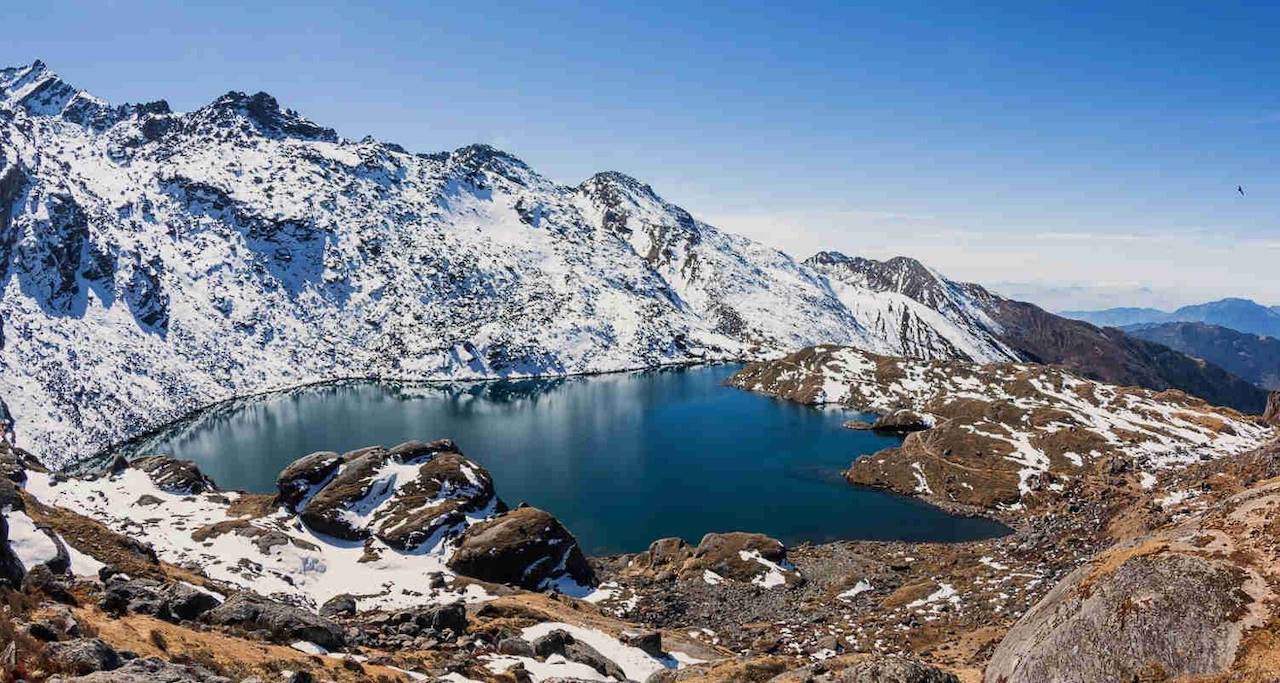
The trek begins at Sundarijal on the edge of Kathmandu and climbs up to the Kathmandu Valley rim at Chisapani (2095m), a well know Himalayan viewpoint.
After an initial descent it’s then mostly uphill as you head deep into the lesser visited Helambu region.The hiking over the next few days is magical as you walk along ridge lines, up through forests of pine and rhododendrons and passing through many small, traditional villages. Four days of this superlative, but also quite tough trekking that doesn’t feel touristy leads to Surche Phedi, the overnight halt before ascending the high Lauribina La (4600m).
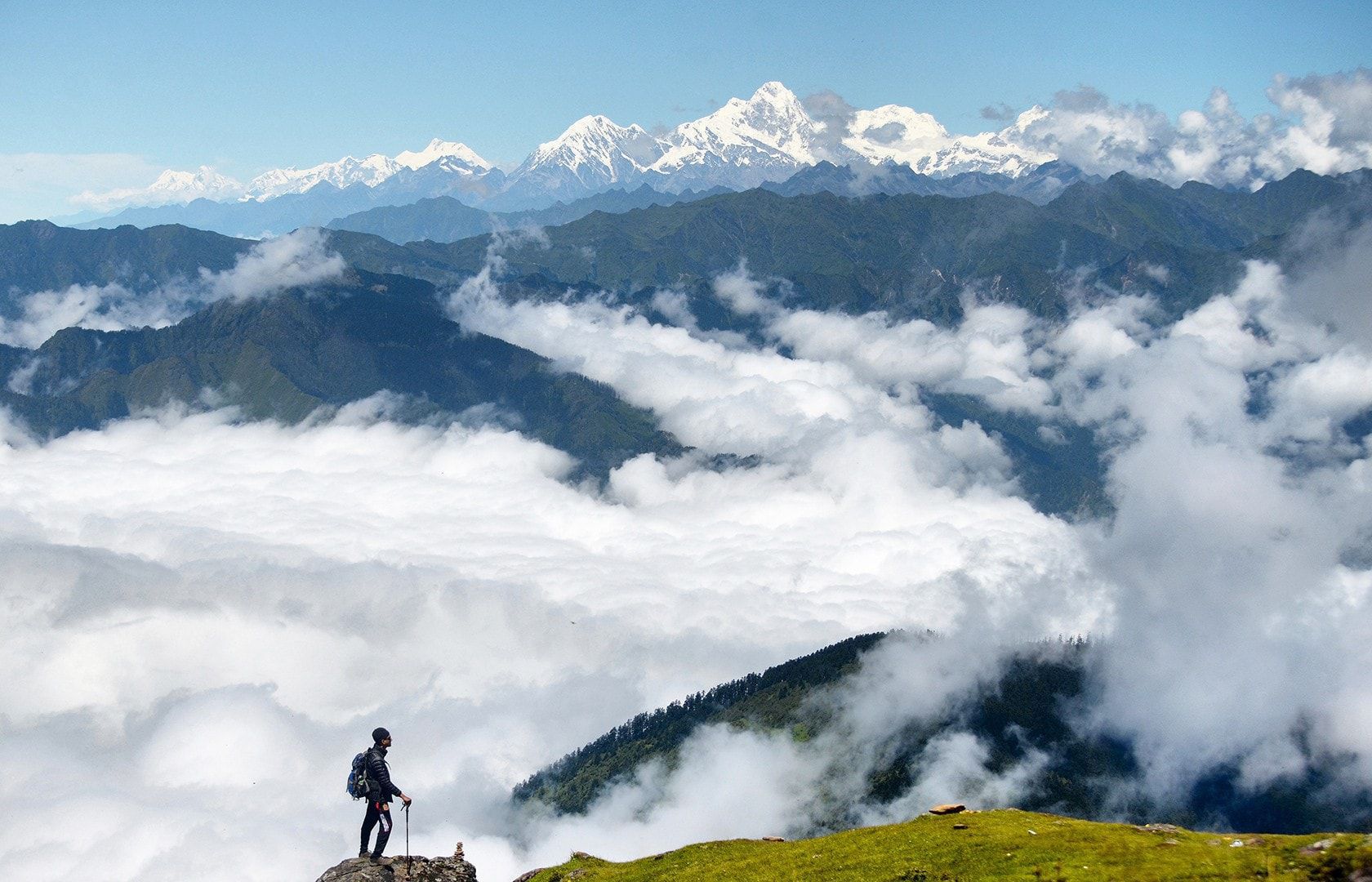
There’s around 900m of ascent needed to huff and puff your way up to the pass itself. But, the views are worth it. On display should be a panoramic view of the Langtang and Ganesh Himal, with the lakes of Gosainkund below. Descending from the Lauribina La to the sacred lakes there’s a pilgrim centre to visit before reaching the overnight halt at a lodge in Lauribina itself at 3900m.
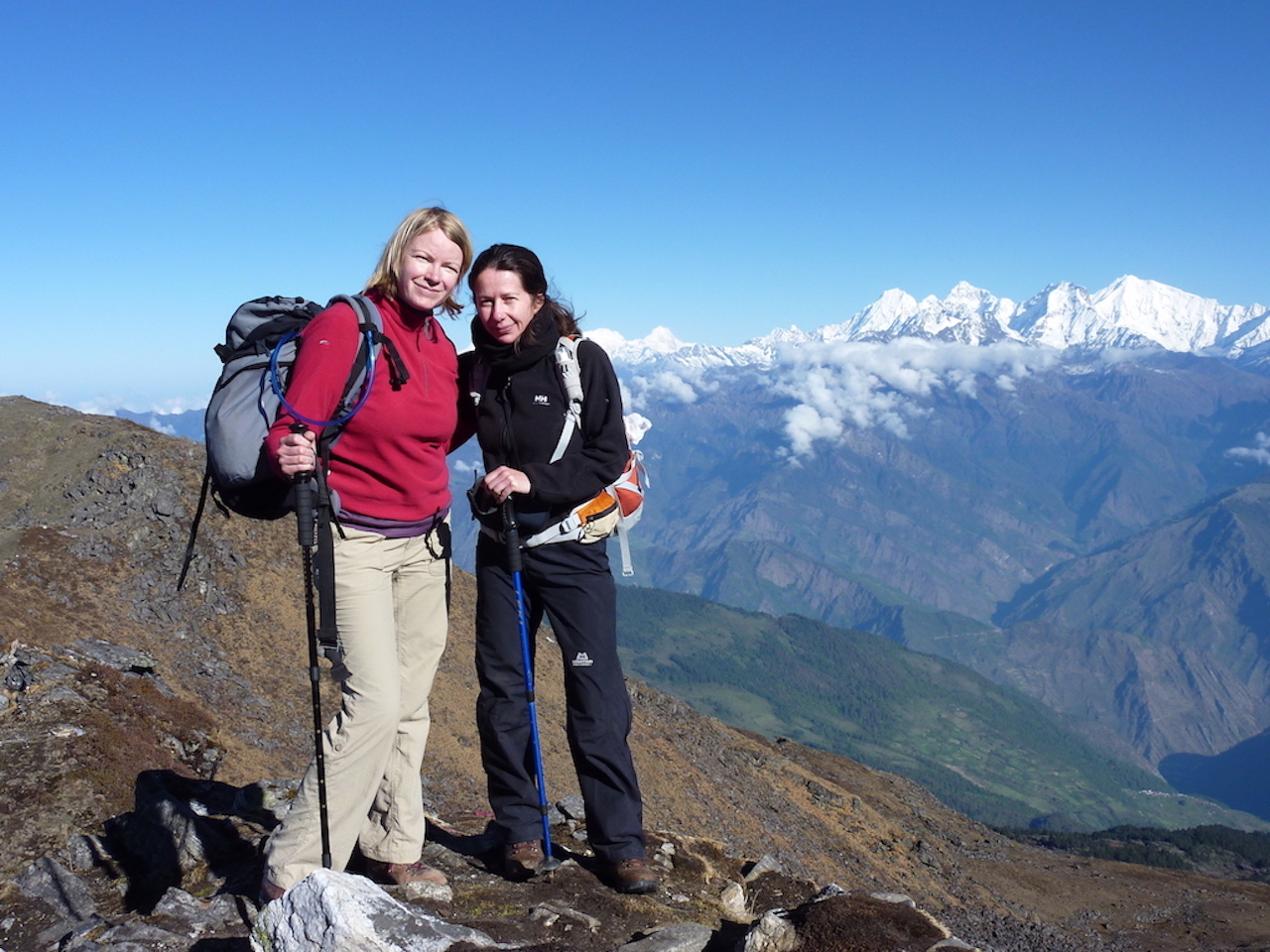
The following day is mostly downhill as you lose around 1900m in height to reach Thulu Syabru and the lower reaches of the delightful Langtang Valley passing Sing Gompa along the way. Some of the trail is through forest known to contain the very rare red panda.
Leaving Thulu Syabru you trek to the road head at Thulo Barkhu. In theory you could reach Kathmandu overland the same day, but it would make for a very long and exhausting day. So, it’s preferable to be driven as far as Nuwakot today and spend the night at the wonderful Famous Farm before heading to Kathmandu the following morning.
For more see: Gosainkund Lakes Trek
10 walking days, maximum altitude 4300m
It may come as a bit of surprise that our number one is a “famous” trek. Whether you know it as the Annapurna Sanctuary Trek or the Annapurna Base Camp Trek it’s been and still is one of the most popular treks in Nepal.
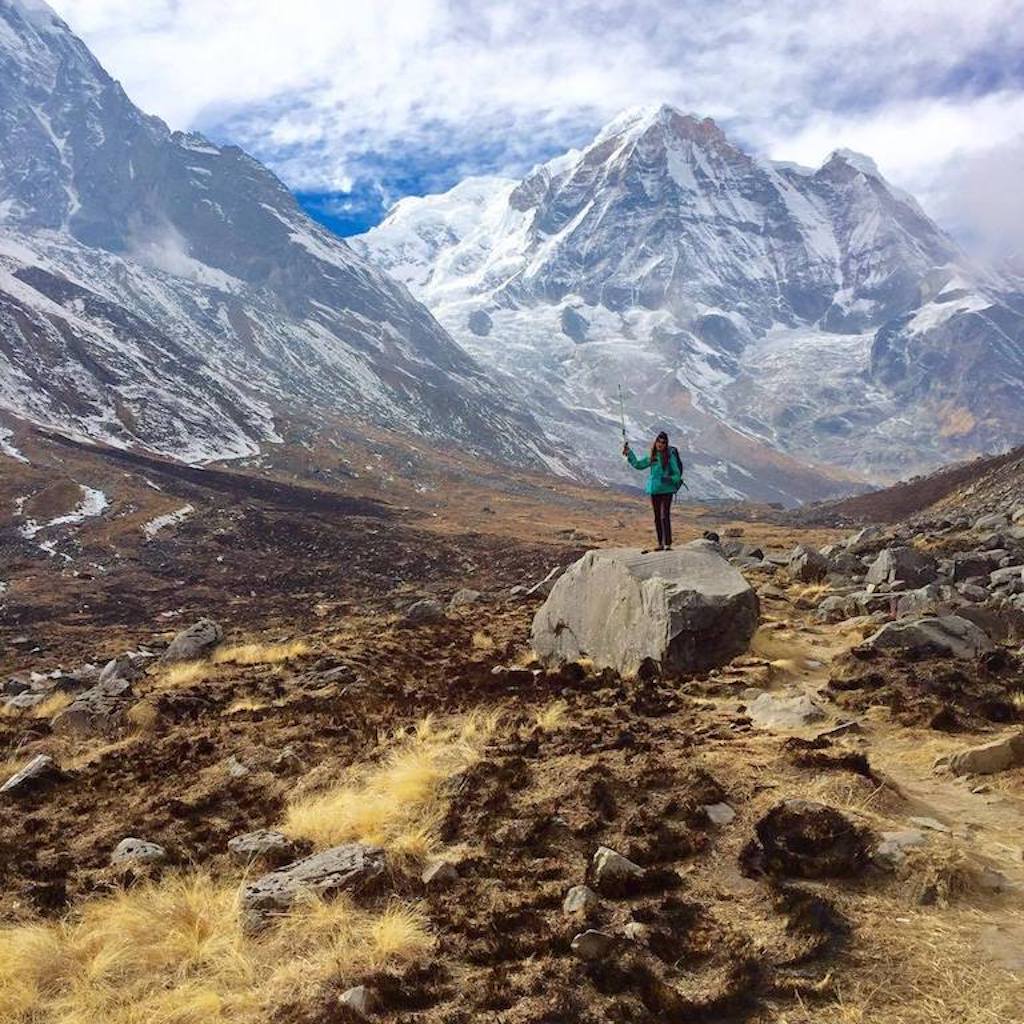
And there’s a good reason for that. It is spectacular and beautiful too as you head up from a lush, verdant sub-tropical zone to a wilder and mountainous alpine zone.
Incidentally Annapurna Base Camp is within what is known as the Annapurna Sanctuary. This being an immense “hidden” valley system and is quite simply one of the most dramatic mountain amphitheatres in the world too.
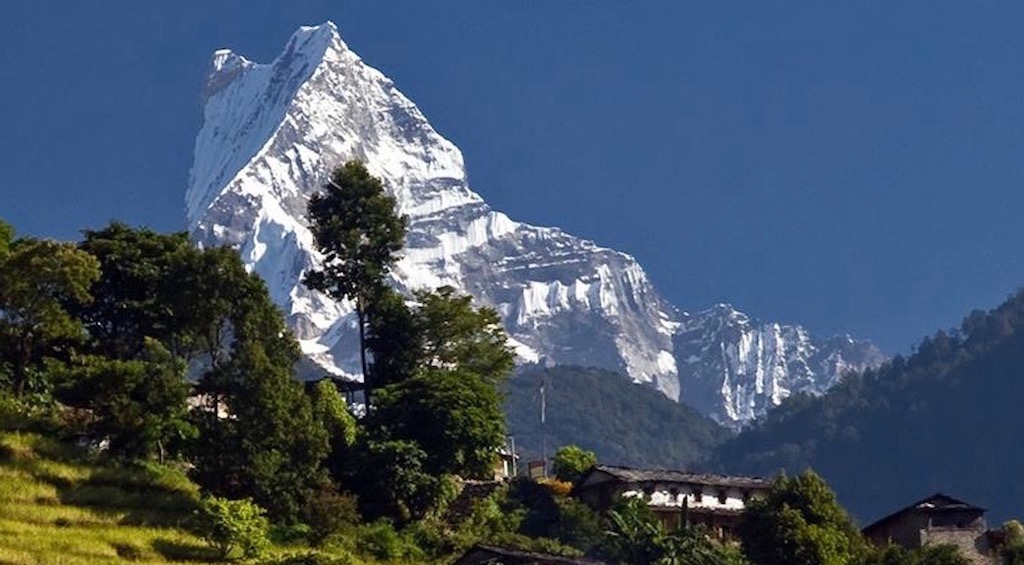
t may also surprise that this “household name” can also be considered as a short trek. But, that is because the encroachment of jeep roads in to the lower section of the Modi Khola Valley now negate the need for several days of walking for what used to be the initial approach and exit.
So, yes, you have to share the trail with lots of other trekkers. But, the close up views of the peaks either side of the valley are just phenomenal and it gets even better when you reach the Annapurna Sanctuary itself. There’s no way a place of such magnitude wouldn’t attract lots of other people. In fact it’s hard to imagine that the early expeditions in the 1950’s looking to be the first to climb Annapurna never found the Annapurna Sanctuary and indeed went via a different valley altogether. And yet nowadays there are several trekking lodges at Annapurna Base Camp!
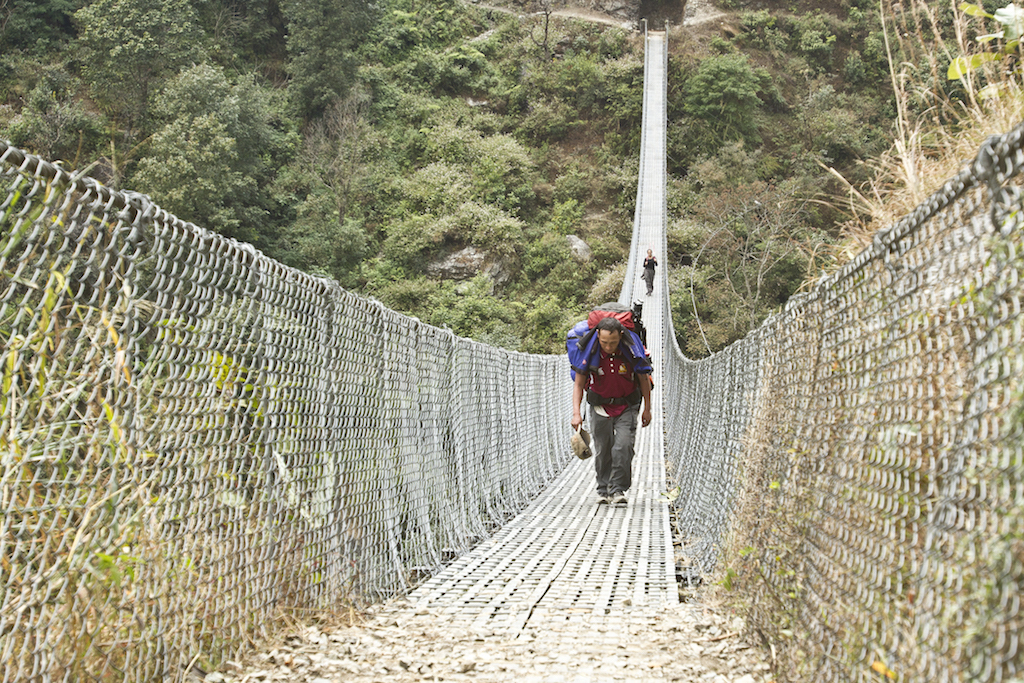
The adventure to Annapurna Base Camp begins with the short flight from Kathmandu to Pokhara and then up to Ghandruk (2000m) by jeep.
Leaving Ghandruk the following morning it’s a mix of up and down, but more in the way of up to the next overnight halt at Chhomrong (2210m).
From Chhomrong there’s only one way and that is up! As you head further up the Modi Khola Valley it begins to narrow and a lot of the ascent is quite steep. So, it’s wise not to try and ascend too quickly and aim to walk around 4-6hrs per day so that you arrive at the next trekking lodge with plenty of time to rest and get used to the gains in altitude.
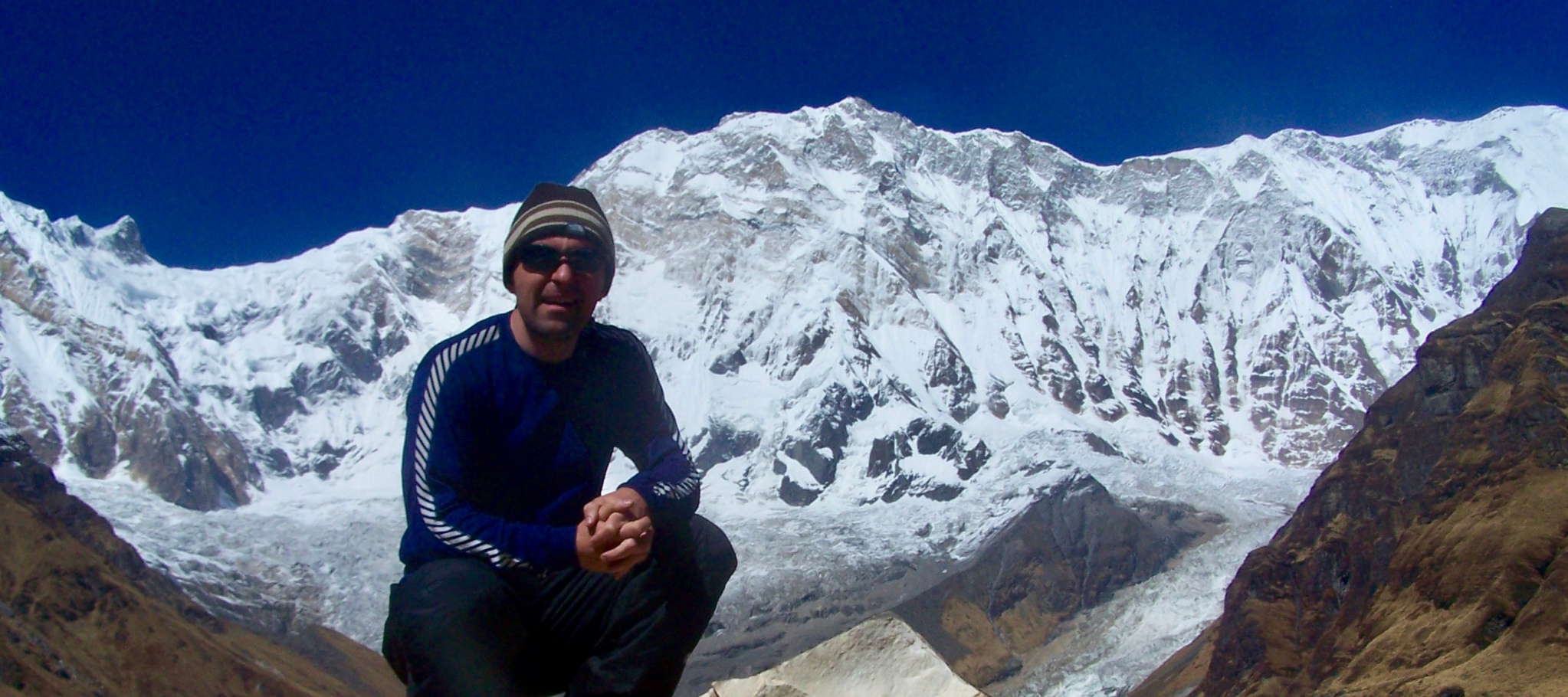
From Chhomrong a typical controlled ascent would be to trek to Bamboo (2315m), then to Deorali (3170m) and then to MBC (Macchhapuchare Base Camp) at 3700m.
From MBC it’s then a relatively short walk of around 3-4hrs to reach Annapurna Base Camp at around 4130m, although it still involves 500m of ascent and there is one final steep section before you get to see the Annapurna Sanctuary unveil itself in its full panoramic glory, including the treacherous, but also majestic Annapurna 1 (8091m). If you set off from MBC early in the morning you should reach Annapurna Base Camp in time for lunch and in the afternoon head up to a viewpoint or closer to Annapurna itself.
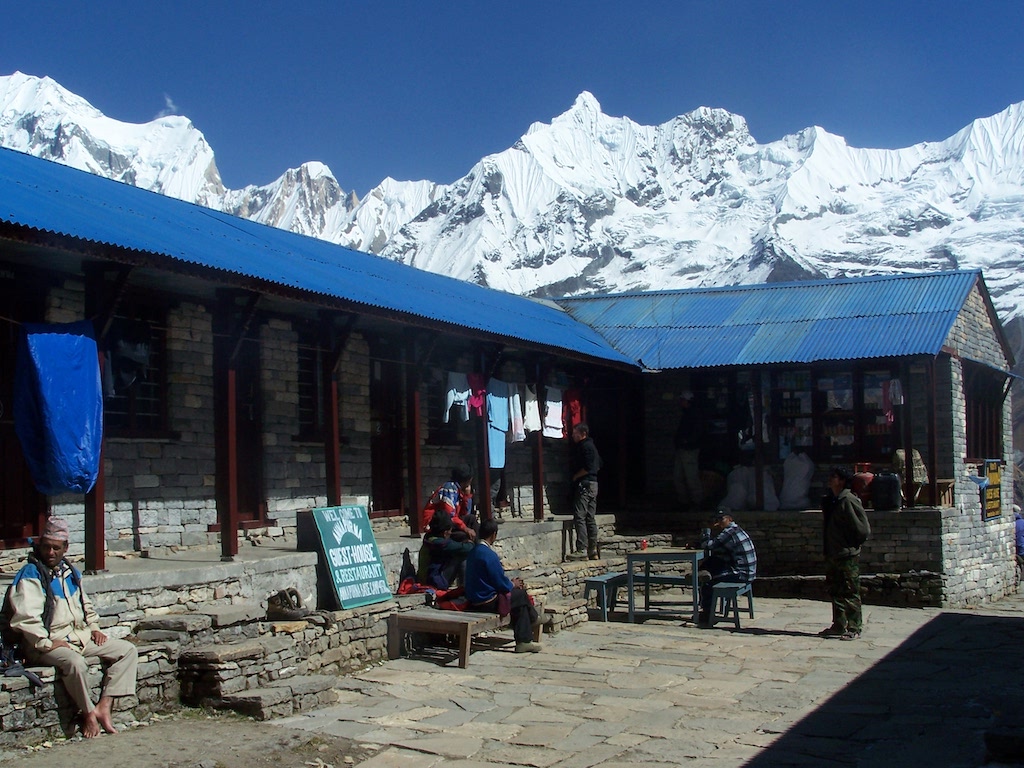
From the Annapurna Sanctuary you can get back down to Chhomrong in two days overnighting in Dobhan along the way. From here it’s then a couple of hours of walking down to the jeep road at Syauli Bhatti and three hours later you should be back in the balmy warmth of Pokhara once again. cIt’s then a mere 25 minutes flying time back to Kathmandu the following morning.
For more see: Annapurna Sanctuary Trek
This article was originally published on the Snow Cat Travel WordPress Blog Page
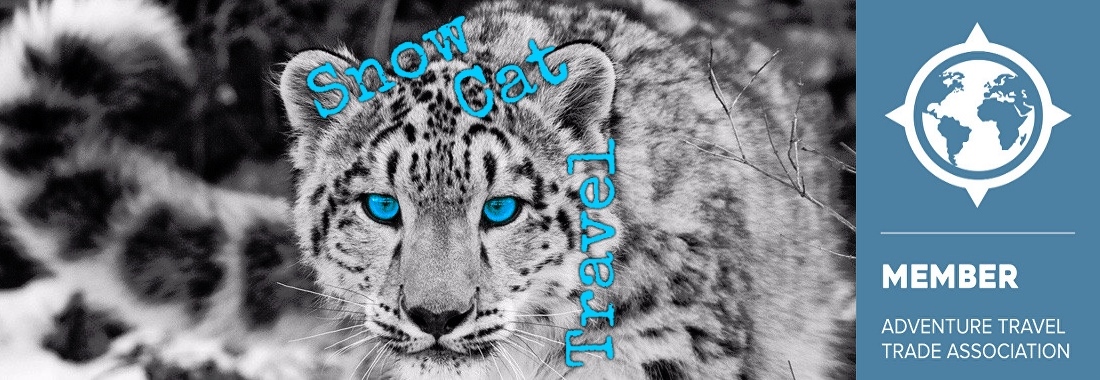

All rights reserved. Snow Cat Travel is a Registered Trade Mark UK 00003289264

